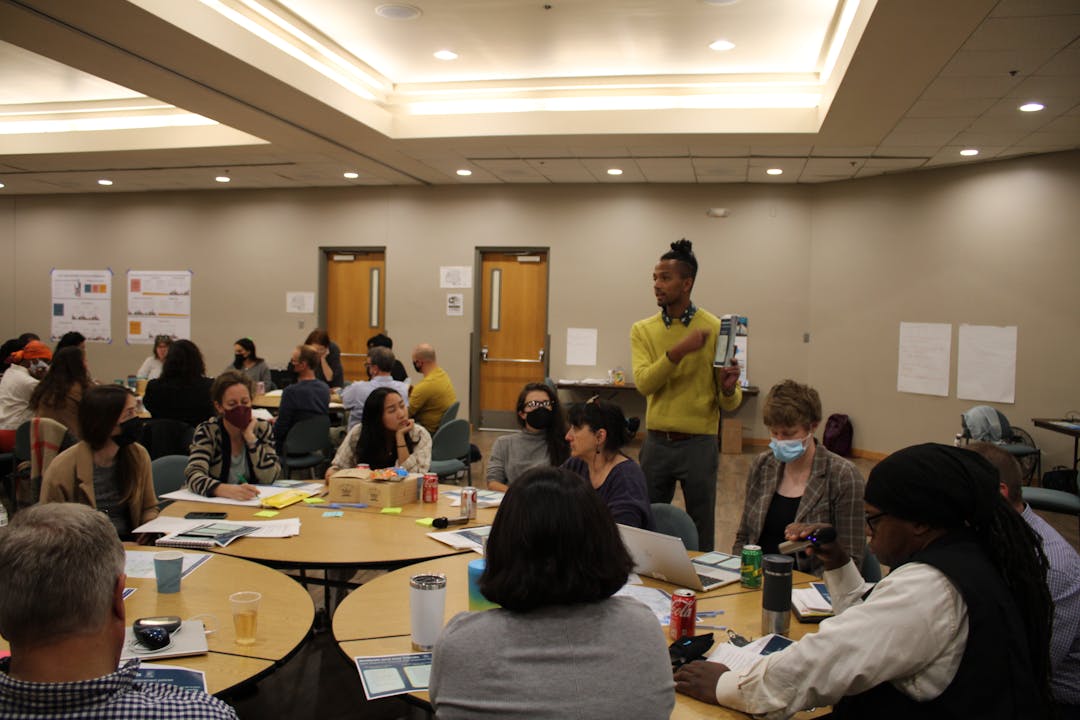Building prosperity, preventing displacement

In response to concerns of displacement around the planned Blue Line Extension, Hennepin County and the Metropolitan Council launched a first-of-its-kind community oriented anti-displacement initiative.
To lead the initial phases of this work, Hennepin County contracted with the University of Minnesota's Center for Urban and Regional Affairs (CURA) to convene an Anti-Displacement Work Group that centered community voices and brought together diverse stakeholders to study and recommend anti-displacement strategies to help ensure the value of light rail will benefit current corridor residents, and minimize physical, cultural, and economic displacement.
After meeting for more than a year, the work group published their recommendations in May 2023 for public review.
We will continue to lead this work with community to further develop, refine, and advance these recommendations, bring together partners for funding and implementation, and begin exploring more ways to maximize community benefits of light rail for current corridor residents.
This work will be ongoing throughout the life of the project, and beyond with a focus on both short- and long-term solutions.
Read the recommendations report
- Blue Line Extension anti-displacement recommendations report (PDF)
- Executive summary - Blue Line Extension anti-displacement recommendations report (PDF)
Summary handouts
- Blue Line Extension community anti-displacement recommendations (PDF)
- Recomendaciones de la comunidad para evitar los desplazamientos causados por la Extensión de la Línea Azul (PDF)
Share your input
There are several ways to share your input on the anti-displacement recommendations below.
Comments and suggestions can also be emailed to ADWGfeedback@umn.edu
Please reference specific pages or passages in the report, whenever possible.
Ask questions about the report
What questions do you have about the Blue Line Extension Anti-Displacement Recommendations report, research, or recommendations? Please reference specific pages and passages in the report whenever possible.





Thank you for your contribution!
Help us reach out to more people in the community
Share this with family and friends